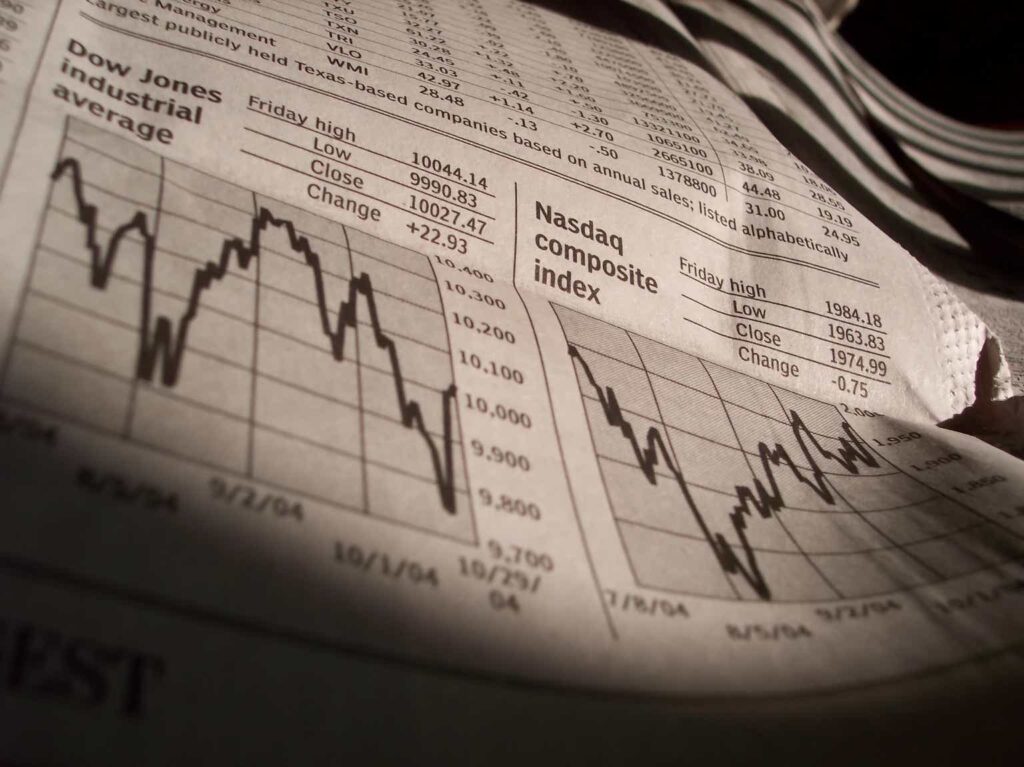Large-cap growth stocks have come back into relative favor. The one-month ETF performance heat map below shows that the size and style is about flat whereas some other niches of the stock market remain in the red. Generally impressive Q1 earnings reports from most of the Magnificent Seven companies buoyed the group, with all five of the $1 trillion market cap club members beating on both the top and bottom lines, but I still have my concerns about what the next few months have in store considering the Nasdaq 100’s valuation and dicey technical trends.
I am downgrading the Invesco NASDAQ 100 ETF (NASDAQ:QQQM) from a buy to a hold. I was bullish on the space in Q3 last year, but some profit-taking has been ongoing, and I expect that sort of price action to continue into the summer.
One-Month ETF Performance Heat Map: US Large-Cap Growth Into Positive Territory
Finviz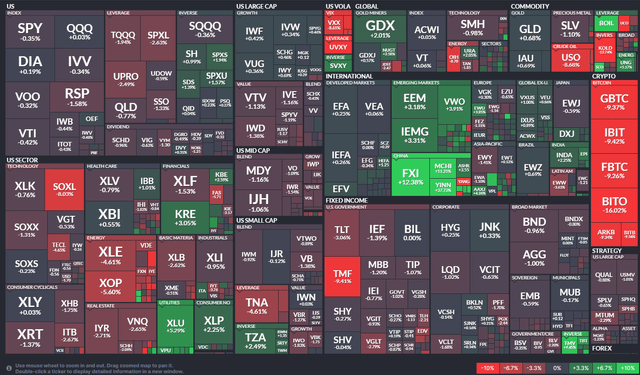
According to the issuer, QQQM is based on the NASDAQ-100 Index. The fund will invest at least 90% of its total assets in the securities that comprise the Index. The index includes securities of 100 of the largest domestic and international nonfinancial companies listed on the Nasdaq. The ETF is rebalanced quarterly and reconstituted annually.
QQQM is comparable to the more well-known Nasdaq 100 ETF (QQQ). The primary difference is that the former features a lower expense ratio of just 0.15%, five basis points below that of the latter. There may also be a tax advantage regarding dividends with QQQM versus QQQ, but I urge investors to consult with tax professionals when making investment decisions based on tax implications.
Still, QQQM features very strong share-price momentum, even after a notable pullback from its late-March peak. The ETF pays a small 0.66% trailing 12-month dividend yield while a B+ ETF Grade on risk is evidence that the last year has not featured very much volatility. Finally, with an A+ liquidity grade given high average daily volume and a tight median 30-day bid/ask spread of just a single basis point; investors should have no issues using market orders during the trading day.
Looking closer at the portfolio, the 4-star, Neutral-rated fund by Morningstar plots across the top row of the style box with heavy exposure to the growth style. Thus, it is not surprising that QQQM sports a premium valuation, north of 25 times earnings. With high earnings quality, the ETF’s long-term EPS growth rate is likewise high at 13.1%, making for a PEG ratio that is not all that high, but it is by no means a bargain.
QQQM: Portfolio & Factor Profiles
Morningstar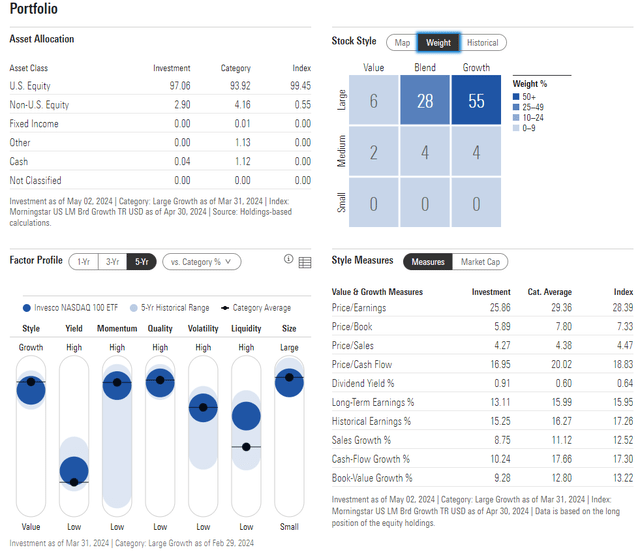
Almost half of QQQM is invested in the Information Technology sector. When that area outperforms, QQQM and other tech-focused funds are the places to be. But we have seen significant periods of strength from non-growth areas like Energy and Financials in 2024, and that could continue even after the most recent alpha spurt by large-cap growth. Energy and Financials together comprise barely more than 1% of QQQM.
QQQM: Holdings & Dividend Information
Seeking Alpha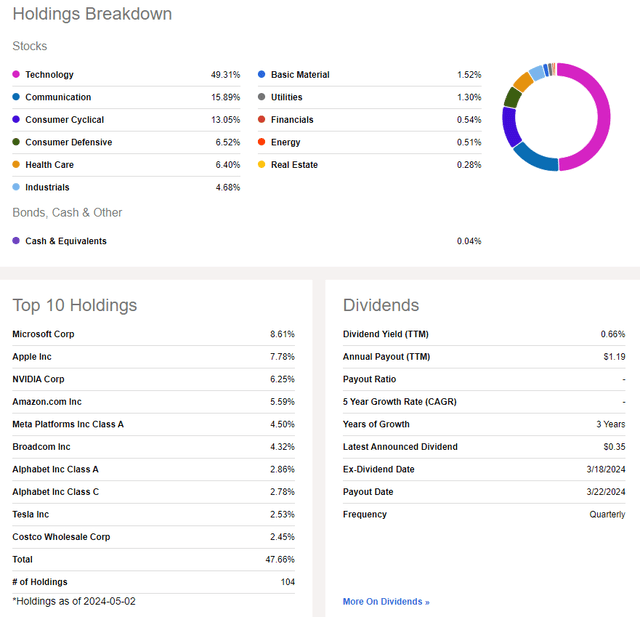
Seasonally, now is actually a favorable time to be long the Nasdaq 100. I researched trends on the longer-lived QQQ ETF for clues on what the next handful of months could have in the cards. May through August has historically produced cumulative gains not far from 10% since 2014, so that is certainly a bullish piece of evidence looking ahead.
QQQ: Bullish Trends Through August
Seeking Alpha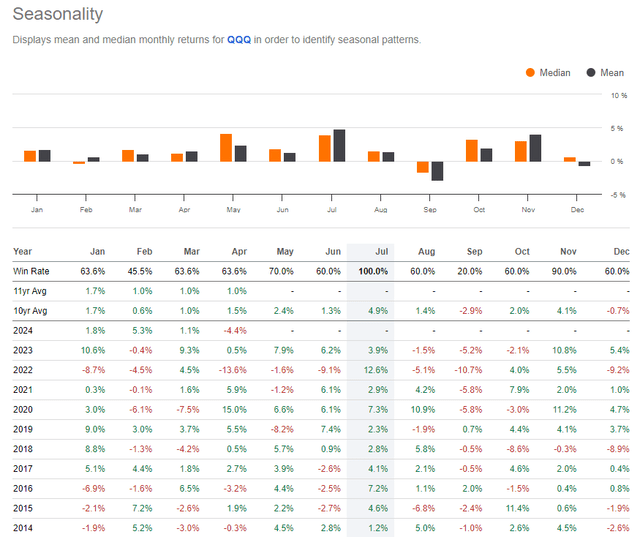
The Technical Take
With a lukewarm valuation, concentrated portfolio, and bullish seasonal factors, the momentum situation has taken a breather in my view. Notice in the chart below that QQQM remains in a downtrend in terms of the RSI momentum oscillator, but a bullish breakout could be in the works. Technicians like to see confirmation of such moves before acting, however, and for now, price remains in consolidation mode. I do see important support in the mid-$160s. There is a confluence of technical areas of interest there.
First, $168 is the peak from late 2021. The fund held that spot during the March to April pullback. What’s more, the 38.2% Fibonacci retracement from the October 2023 low to the March 2024 peak comes into play a few pennies above $168. Thirdly, the rising 200-day moving average is currently at $164. So long as QQQM is above that zone, the technicals don’t look too bad despite the short-term 50-day moving average having rolled over a few weeks ago.
Overall, QQQM has moved sideways in the last few months, and we need to see better confirmation that this correction has run its course.
QQQM: Bearish RSI Trend, ETF Holds Key Long-Term Support For Now
Stockcharts.com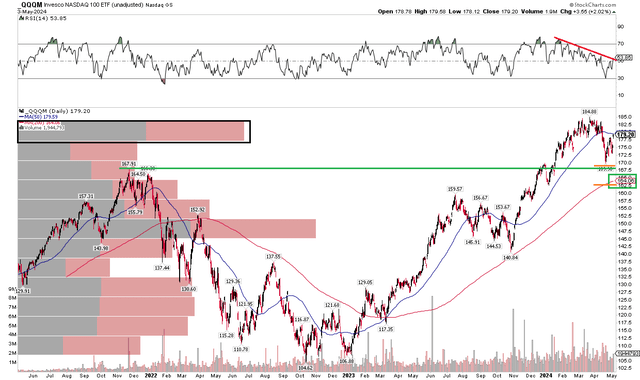
The Bottom Line
I am downgrading QQQM from a buy to a hold. I see the valuation as more stretched today versus Q3 last year while the technicals flash a few warning signs amid a consolidation pattern.
Read the full article here


